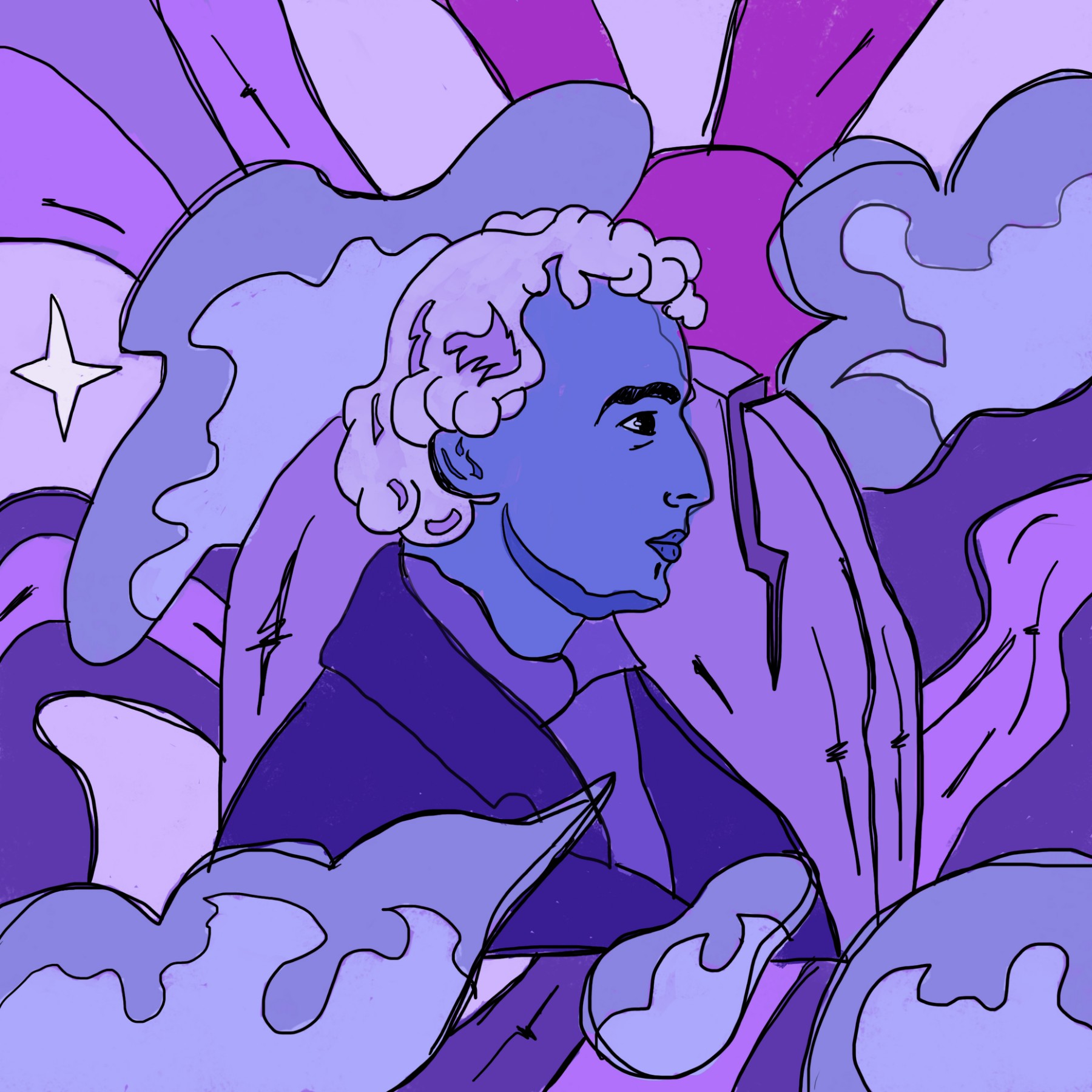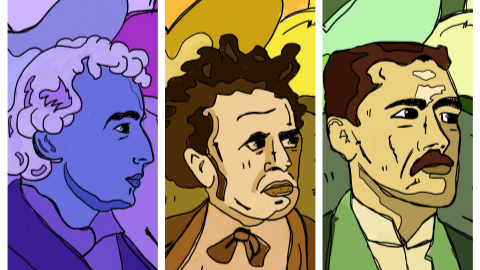Here lies one whose name was writ in water
If we were all equal, would Joseph Severn, Heinrich Köselitz, and Paco Román have lived their lives the way they did?
By AA Patawaran
At A Glance
- I write of these three unsung heroes while thinking about today's young people, accused perhaps unfairly of self-entitlement and a lack of fortitude but raised in such a way as to believe they deserve no less than the spotlight in the universe.

Do you know Joseph Severn?
If you did, it’s maybe only because of John Keats. He was the portraitist and painter who agreed to accompany the English poet when, afflicted with tuberculosis, of which his two brothers and his mother before him died, Keats decided to take refuge in the warmer climate of Italy, traveling by boat from London in Sep. 1820.
It was a long, harrowing journey and no one was willing to keep him company, not his family, not his friends, no one but Joseph Severn, who was no more than a passing acquaintance and whose only motivation to go, against his father’s wishes, was the honor of learning from a poet.
After weeks at sea, Keats and Severn made it to Naples, only to be quarantined for 10 days. From there, they proceeded by carriage to Rome, arriving there on Nov. 14, 1820 and settling in a villa just at the bottom right of the Spanish Steps. He had no idea that he had traveled all the way just to die, though he had been obsessed with his early death, even in his works. Convinced that he had made no mark in his lifetime, he wrote his fiancée Fanny Brawne while in Rome, just before he died, “I have left no immortal work behind me—nothing to make my friends proud of my memory—but I have lov’d the principle of beauty in all things, and if I had had time I would have made myself remember’d.” In fact, among his last wishes was to be buried under a tombstone that bore neither name nor date, just the words “Here lies the one whose name is writ in water.”
Keats died on Feb. 23, 1821. Too young, he was barely 25. His prophecy would have been true, had it not been for Joseph Severn, who apparently made good use of his brief time with the poet.
Aside from nursing him, Severn did portraits of Keats, sketched his deathbed and his work desk and his living space, wrote numerous letters to his family and friends in London about Keats and his state of health, and recorded as much of the goings-on as he could in a journal. His hard work was the only surviving account of Keats’s days in Rome and biographers turned to it as a source of the poet’s last days and wishes. It might be fair to say that the world came to know much about John Keats through Joseph Severn, who died 58 years after his friend, at the age of 85. He was buried alongside Keats at the Protestant Cemetery in Rome.

Do you know Heinrich Köselitz?
A German author and composer, he was better known as Peter Gast, a pseudonym given him by his friend Friedrich Nietzsche. Gast stood by Nietzsche in those days the philosopher’s eyesight had failed him longer and so much more seriously than usual—he suffered intermittent spells of near blindness due to various disruptive illnesses that plagued him since childhood—that he had to rely on the Hansen Writing Ball, an early typewriter device, to be able to continue with his writing.
The typewriter notwithstanding, Gast had to painstakingly and with great difficulty transcribe the essay “Richard Wagner in Bayreuth,” one of four majors works that consisted Nietzsche’s Untimely Meditations, a philosophical exploration of the condition of European, mostly German, culture. Deciphering the philosopher’s nearly illegible handwriting was no easy task, but on top of it he also took dictation and read aloud to the philosopher. By 1876, Gast had wholly devoted himself to transcribing and proofreading all of Nietzsche’s works, in exchange for which he received no more than an occasional cash reward of 200 marks—in fact maybe only once, from Nietzsche’s friend (later estranged), German author and philosopher Paul Rée—and enjoyed the privilege of being one of very few friends Nietzsche allowed to critique his works, including Thus Spoke Zarathustra.
To the very end and to the point of self-denial, he stayed loyal to Nietzsche and his loyalty was so acknowledged that Nietzsche, in describing a particular work, referred to Peter Gast as “really the writer whereas I was only the author.”

Do you know Paco Román?
Of the three, I would say he was the least selfless, but only because, in my view, his supreme sacrifice served three masters—General Antonio Luna, his country the Philippines, and his honor as a soldier. Nevertheless, Francisco “Paco” Velasquez Román was no different and, just like Severn and Gast, he played his supporting role in the saga of history to the hilt.
He was Spanish-Filipino, born in Cagayan of a Filipino mother, a Tagalog, and a Spanish national. The family moved to Manila to establish a tobacco factory, a thriving business Román later took over, after his studies at Ateneo Municipal and in Hong Kong, where he took up commerce.
As a businessman, he was secretly financing the revolution, even as he sided with the colonial government on account of his father being a Spanish national and, later, volunteered in the Spanish cavalry to disguise his revolutionary leanings.
At the onset of the Philippine-American War, Román dispensed with all pretences and joined the Katipunan, in which, rising from the ranks, he soon became Luna’s aide-de-camp. He was credited for leading the Second Battle of Caloocan, in which they were able to push the invading American forces back to the heart of Manila.
Not much else is known about Paco Román, except that, to the very end, he fought alongside Luna. On June 5, 1899, he died alongside Luna, in as gruesome a way as Luna did in the hands of Emilio Aguinaldo’s personal guards from Kawit, who shot and stabbed them multiple times with bolos. The very next day, in the town cemetery of Cabanatuan, where they were assassinated, he was also buried with military honors next to Luna’s grave, except that Luna’s remains were later exhumed and transferred to Quiapo in Manila while Román’s were lost in the shadows of history.
Today, a street, narrow, crooked, dusty, and mean, is named after him in the innards of Santa Ana, Manila, through which I once passed, to my elation, on the advice of Waze as I negotiated my way to Rockwell from Intramuros. There is also a Paco Roman Street in Cabanatuan City, site of his tragic fate. In the 2015 film Heneral Luna by Jerrold Tarog, Joem Bascon played him well enough in a supporting role that drove me to ask, “How come I do not know this Paco Román?”

I write of these three—I’m sure there are many others—while thinking about today’s young people, accused perhaps unfairly of self-entitlement and a lack of fortitude but raised in such a way as to believe they deserve no less than the spotlight in the universe.
I wonder how they would play their role, if they were to know it wouldn’t be the starring role, if they were to know that theirs would only be a supporting role, such as those played by Joseph Severn, Peter Gast, and our very own Paco Román.